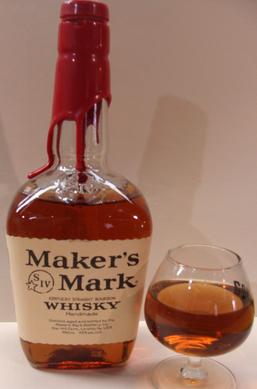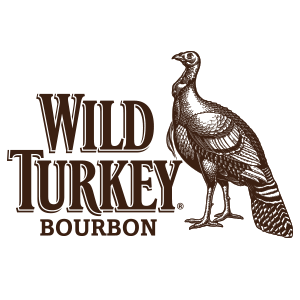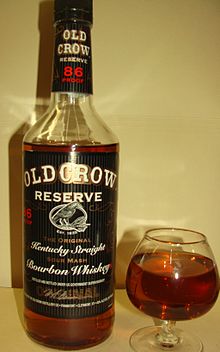
Whisky or whiskey is a type of liquor made from fermented grain mash. Various grains are used for different varieties, including barley, corn, rye, and wheat. Whisky is typically aged in wooden casks, which are typically made of charred white oak. Uncharred white oak casks previously used for the aging of port, rum or sherry are also sometimes used.

Bourbon is a type of barrel-aged American whiskey made primarily from corn (maize). The name derives from the French Bourbon dynasty, although the precise source of inspiration is uncertain; contenders include Bourbon County in Kentucky and Bourbon Street in New Orleans, both of which are named after the dynasty. The name bourbon may not have been used until the 1850s, and the association with Bourbon County was not evident until the 1870s.

Rye whiskey can refer to two different, but related, types of whiskey:

Jack Daniel's is a brand of Tennessee whiskey. It is produced in Lynchburg, Tennessee, by the Jack Daniel Distillery, which has been owned by the Brown–Forman Corporation since 1956.

Maker's Mark is a small-batch bourbon whiskey produced in Loretto, Kentucky, by Beam Suntory. It is bottled at 90 U.S. proof and sold in squarish bottles sealed with red wax. The distillery offers tours, and is part of the American Whiskey Trail and the Kentucky Bourbon Trail.

Jim Beam is an American brand of bourbon whiskey produced in Clermont, Kentucky, by Beam Suntory. It is one of the best-selling brands of bourbon in the world. Since 1795, seven generations of the Beam family have been involved in whiskey production for the company that produces the brand. The brand name became "Jim Beam" in 1943 in honor of James B. Beam, who rebuilt the business after Prohibition ended. Previously produced by the Beam family and later owned by the Fortune Brands holding company, the brand was purchased by Suntory Holdings in 2014.

Evan Williams is a brand of Kentucky straight bourbon whiskey bottled in Bardstown, Kentucky, by the Heaven Hill company. The product is aged for a minimum of four years. It has been ranked as one of the world's best selling whiskey brands.

Heaven Hill Distilleries, Inc. is a private, American family-owned and operated distillery founded in 1935 and headquartered in Bardstown, Kentucky, that produces and markets the Heaven Hill brand of Kentucky Straight Bourbon Whiskey and a variety of other distilled spirits.

Wild Turkey is a brand of Kentucky straight bourbon whiskey distilled and bottled by the Wild Turkey Distillery, owned by the Campari Group. The distillery is located near Lawrenceburg, Kentucky. It offers tours and is part of the American Whiskey Trail and the Kentucky Bourbon Trail.

Woodford Reserve is a brand of premium small batch Kentucky straight bourbon whiskey produced in Woodford County, Kentucky, by the Brown-Forman Corporation. It is made from a mixture of copper pot still spirits produced at the company's Woodford Reserve Distillery, and column still spirits from the Brown Forman Distillery in Shively, Kentucky. Each 45.2% alcohol by volume bottle bears a unique batch and bottle number. The brand was introduced in 1996. Domestic sales of Woodford Reserve surpassed one million cases in 2021.

Doctor James C. "Jim" Crow has sometimes been loosely credited as the perfecter of the sour mash process used in creating bourbon whiskey. He is also the namesake of the Old Crow brand of bourbon whiskey currently produced by Beam Suntory.

Old Grand-Dad is a brand of bourbon whiskey distilled at the Jim Beam distillery in Clermont, Kentucky. The brand was created by Raymond B. Hayden and named after his grandfather Meredith Basil Hayden Sr., who was a well known distiller during his lifetime. A fanciful portrait of Hayden Sr. is depicted on the front of each bottle. Today, it is owned and produced by Beam Suntory.

Old Forester is a brand of Kentucky straight bourbon whisky produced by the Brown–Forman Corporation. It has been on the market continuously for longer than any other bourbon, and was the first bourbon sold exclusively in sealed bottles. It was first bottled and marketed in 1870 by the former pharmaceutical salesman turned bourbon-merchant George Garvin Brown – the founder of the Brown–Forman Corporation. During the Prohibition period from 1920 to 1933, Brown–Forman received one of only six licenses authorizing lawful production.

Willett Distillery Ltd, is a private, family-owned-and-operated company that produces bourbon and rye whiskey. Over the years, the company has bottled whiskeys that range from two years of aging maturity up to 28 years. The company was named Kentucky Bourbon Distillers (KBD) between 1984 and 2012.
It has been common practice in the whisky industry for more than a century for distilleries to sell barrels of whisky to blenders and independent bottlers as a means of making additional income. In fact, some distilleries exist solely to serve independent bottlers, and do not market any brands themselves.

Willett Pot Still Reserve Bourbon is brand of a bourbon whiskey produced in Bardstown, Kentucky by the Willett Distillery.
MGP Ingredients, Inc. is a distilled spirits and food ingredients producer with headquarters in Atchison, Kansas, United States.
Old Pogue is a brand of Kentucky straight bourbon whiskey. Located in Maysville, Kentucky, the Old Pogue Distillery carries strong family ties dating back to the 1870s, and is privately owned by members of the Pogue family.

James E. Pepper is an American whiskey brand. The brand is named after a historic American whiskey maker with that name who built and operated a distillery in Lexington, Kentucky, and marketed his whiskey under his family's brand name "Old Pepper" and under his own name. The brand's distillery, known as the Henry Clay distillery and later as the Old Pepper distillery and James E. Pepper distillery, was shut down in 1958 and was left abandoned for more than 50 years until Amir Peay purchased the historic distillery site and relaunched the brand name in 2008. Distilling resumed at the site in 2017.


















